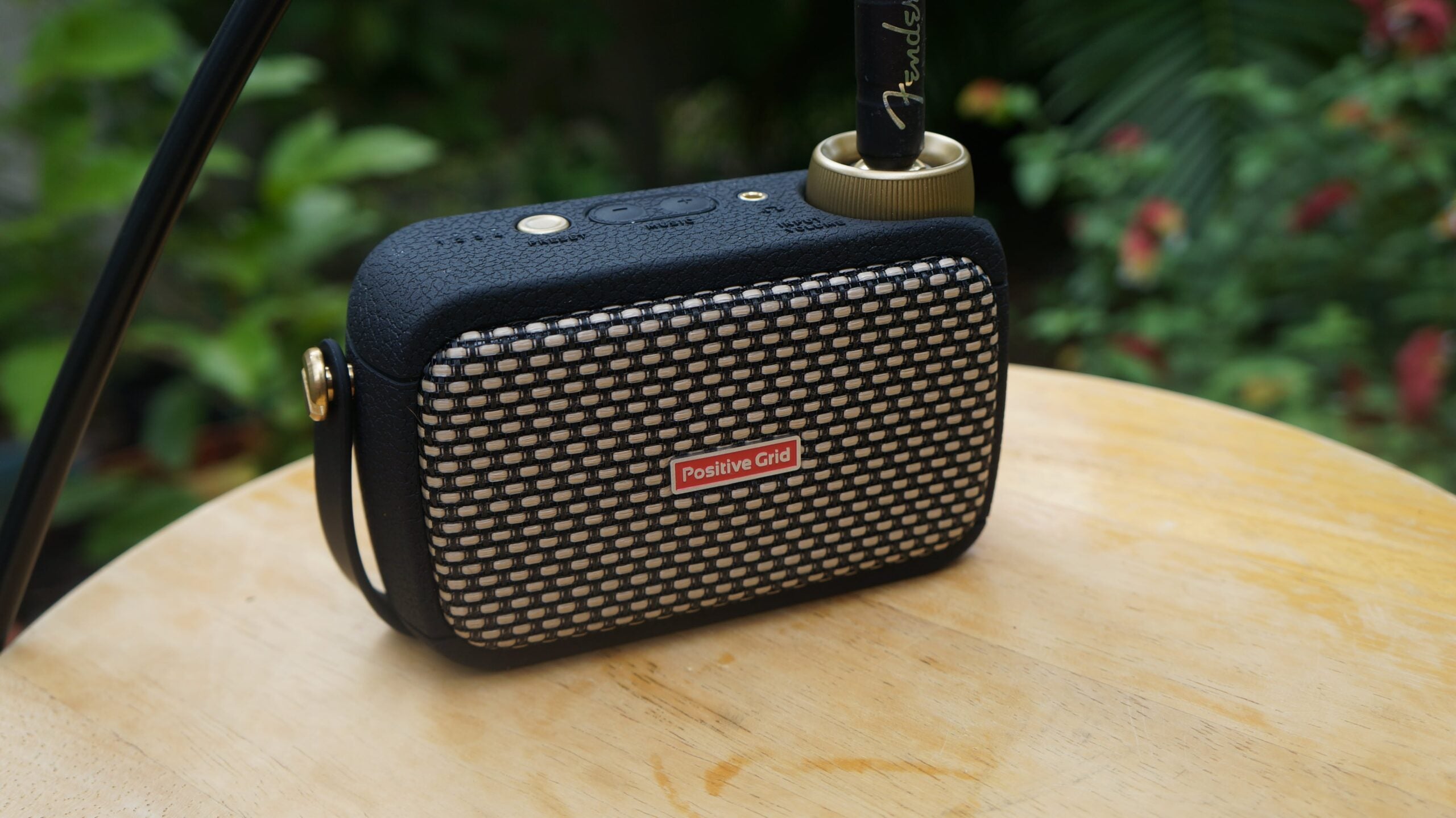Verdict
Another guitar hero from Positive Grid, the Spark Go is a brilliantly portable, battery powered amplifier that delivers true freedom. The speaker might be small, but it produces high quality sound with a truly endless array of unique sounds.
Pros
- Incredibly portable package
- Great value for money with tone library
- 12-hours of battery life
- Sound does over perform speaker size
- Awesome app-based features
Cons
- Small 2-inch speaker with only 5W power
- Feedback when worn on body
- Limited on-amp controls
Availability
- UKRRP: £149
- USARRP: $129
- EuropeRRP: €149
- CanadaRRP: CA$209
- AustraliaRRP: AU$219
Key Features
Introduction
Positive Grid’s Spark guitar amps continue to present the proposition into smaller designs. Following the launch of the battery-powered Spark Mini, the company has followed up with the pocket-sized Spark Go.
It’s the baby brother to the game-changing Spark 40 amp, which bundled size-defying sound with an incredible range of app-based digital amp models and effects to create a truly endless array of fully customisable guitar tones.
It also includes a load of connected features designed to help guitarists learn and play along with their favourite songs and even jam with a virtual band. It doubles as a Bluetooth speaker so you can play along with your favourite tracks.
Just like the middle child, the Spark Mini, the new Spark Go amp does all of that, but without the need to tether to the mains. It has a rechargeable battery, making your amplified guitar playing truly portable. In this case, even clipped to your person.
However, established knowledge suggests that an 5W amp with a 2-inch speaker isn’t going to produce sound worthy of your guitar playing expertise. It goes without saying there will be trade-offs, but can the Spark Go hit the sweet spot between ultimate portability, functionality, and good-enough quality sound?
Read on for the full verdict…
Design
- Incredibly small soda can-sized build
- Design consistency with Spark family
- Very few physical buttons
The Spark Go is around the size (125 x 85 x 45 mm) of a Coke can and at 346g, weighs about the same too. As guitar amplifiers go, it’s tiny and can even fit into your pedal board. Much smaller than the Spark Mini and a fraction of the size of the Spark 40, which itself is renowned for its compact size.
The advantage of this is true portability. It’ll go into your guitar bag easily and, depending on your hard case, might even fit in there too.
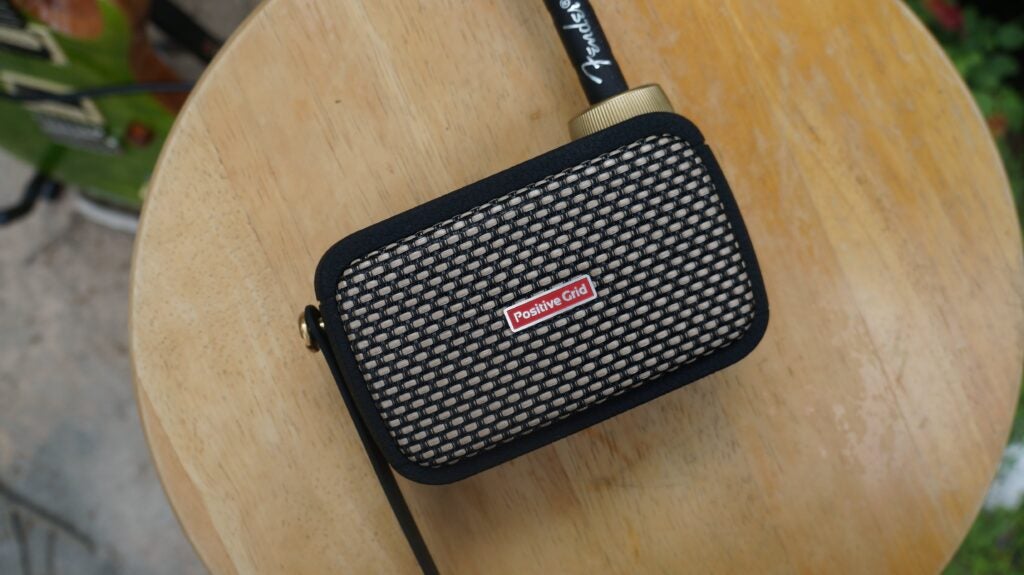
It’s rectangular with curved edges, but with a flat bottom that means it’s able to stand up comfortably, with the rubber silicone coating around the device helping it stay rooted to the surface. That can be easily removed, but it’s handy for gaining purchase on the surface and protecting the amp. When I unboxed it, I thought a kickstand would have been a handy addition, but I haven’t knocked the Spark Go off balance yet. You can also position the amp with the speaker facing directly towards you or with the speaker facing upwards.
The Spark Go does a decent job of maintaining consistent design language with the replaceable speaker plate matching the other two models. Positive Grid also gives you an alternate option in the box.
In terms of on-board controls, this version eschews almost all buttons to bring the physical controls down to the bare bones. Just like the Spark Mini, there are no dials for bass, treble, delay, reverb, etc., which you’d see on a traditional amp (or the Spark 40).
It’s not that important as you can adjust these settings on the digital amp and pedals within the app. However, it does make the Go less useful if you don’t plan on connecting through the app every time. Remember, you can always save your four favourite tones to the amp so you don’t need the app at all.
The power/Bluetooth pairing button is combined. Then there’s a gold button for switching between the four possible pre-set tones, which can be altered to your preferred defaults though the Spark app. There’s a volume rocker for Bluetooth music and a volume dial for the guitar sound integrated into the standard jack input, enabling you to adjust accompanying music and guitar volume independently.
There’s also a 3.5mm headphone jack if you want to pump those guitar sounds directly into your ears. It can act as a line out if you wish to connect to a larger speaker. And there’s a dual-purpose USB-C output for charging and connecting to your computer for recording.
Finally, there’s a golden strap button (with a pair of strap options) that enables you to create a loop so you can attach the amp to your belt land walk around the house rocking out. You won’t even need to worry about tripping over the cables as you can use a short patch cable between the guitar and amp.
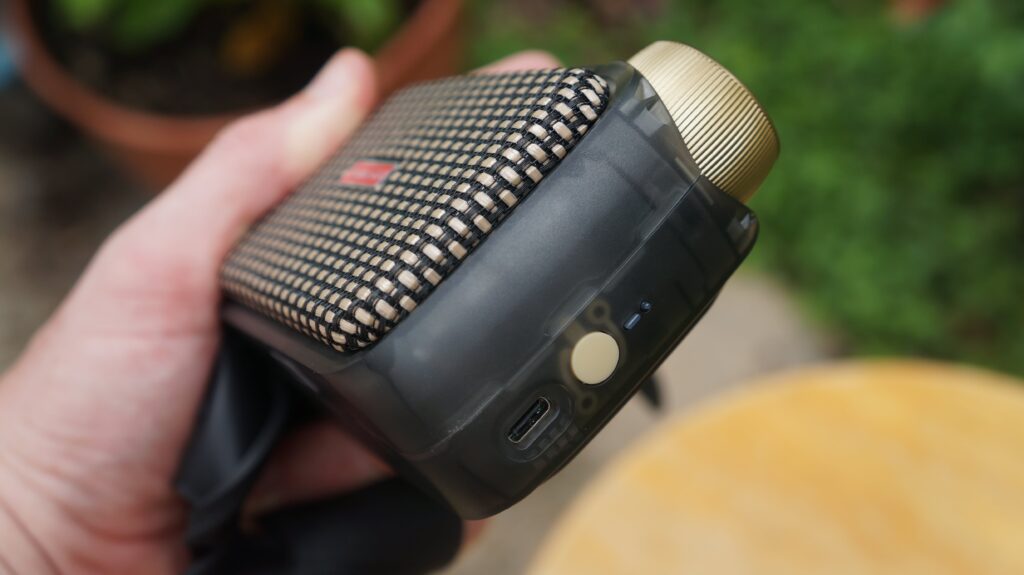
Features
- Very small 2-inch speaker with 5W of power
- USB-C connectivity
- Line out for speakers and connection with PC
- App support
The Spark Go is rated at 5 watts and has a tiny little 2-inch speaker with a passive radiator. The lithium battery lasts eight hours, so once charged via USB-C you’re good to go for a day out. Of course, you can prolong that with a battery pack if necessary.
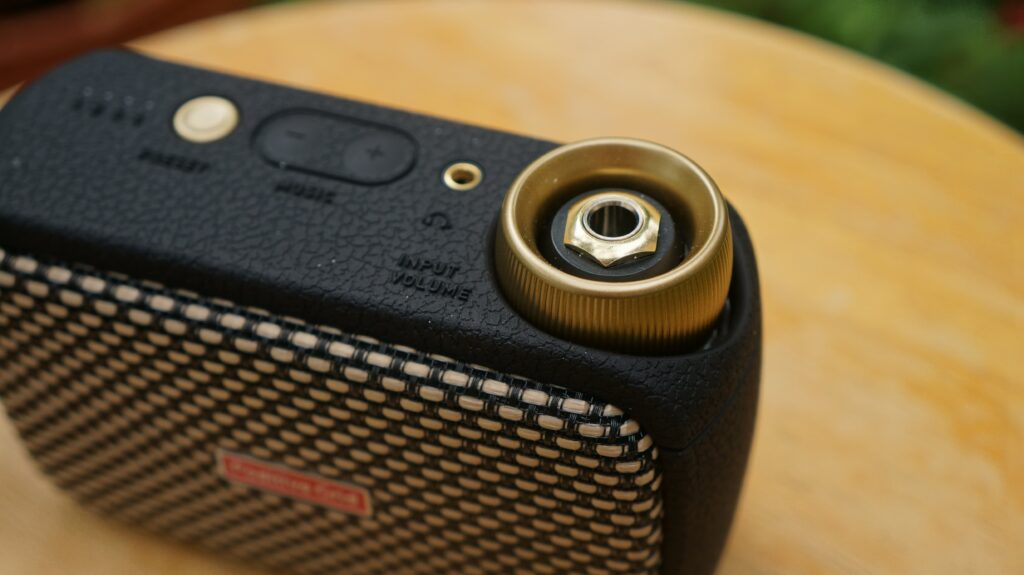
A guitar tone is the unique sound it makes. Most renowned guitarists have a signature sound that derives from their set up and how it’s tweaked. The guitar itself plays a big part, as do the pickups, and on-guitar settings (think Tom Morello of Rage Against The Machine). These are unrelated to the amp and pedal set up.
However, the amplifier used (think Marshall, Orange, etc.), the settings on the amp, and the effects pedals (delay, distortion, reverb, etc.) used are the other key factors, and that’s what the Spark app’s tones attempt to replicate.
There are 33 amp models available based on classic manufacturers and a total of 43 effects. The community has used these bases to create thousands of unique tones you can also add your own spin to.
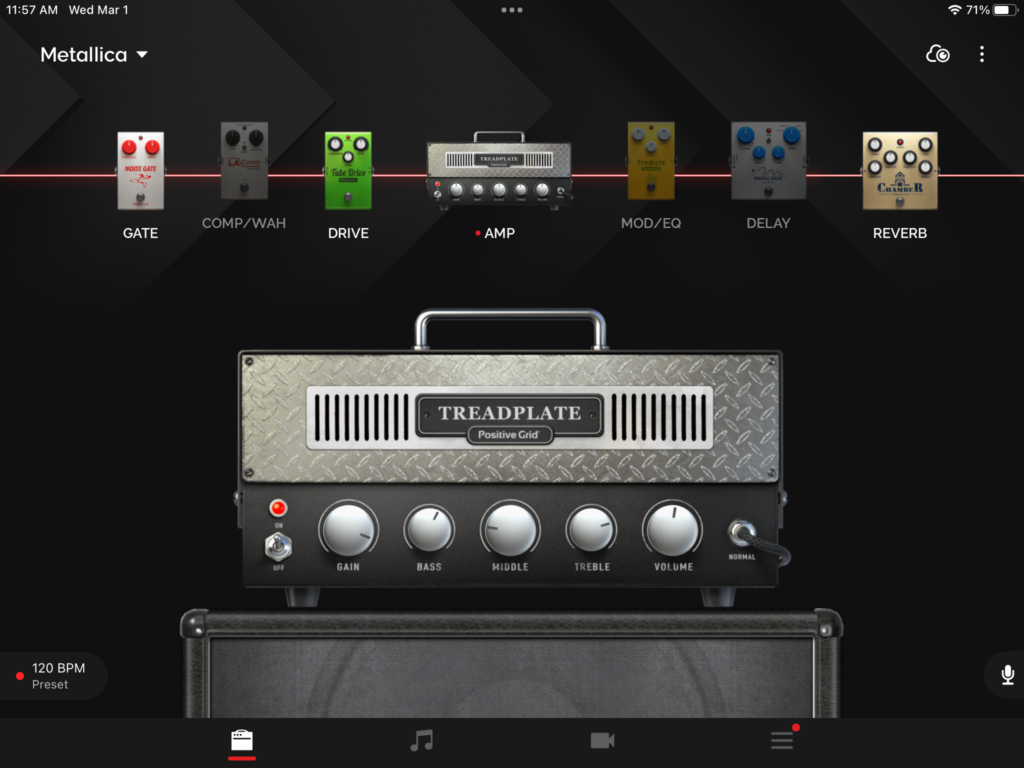
If, like me, you don’t have the time, finances, or expertise to finely tune a guitar sound via the amp or a big grand pedal board, this is where the Spark range truly comes into its own.
I believe this incredible array of downloadable and customisable tones (you can add your own tweaks to the tweaks), is the main reason to buy these products. Your favourites can be quickly saved and switching between them happens in a couple of taps.
All this for $130 is quite the steal, coupled with the fact the amp can work as a go between for plugging your guitar into your computer to record with these tones.
There are plenty of smart features to go with the tones, and these are excellent for beginner and intermediate guitarists. Smart Jam for instance will conjure a backing track with to accompany your own playing style, if you select from one of the pre-set profiles.
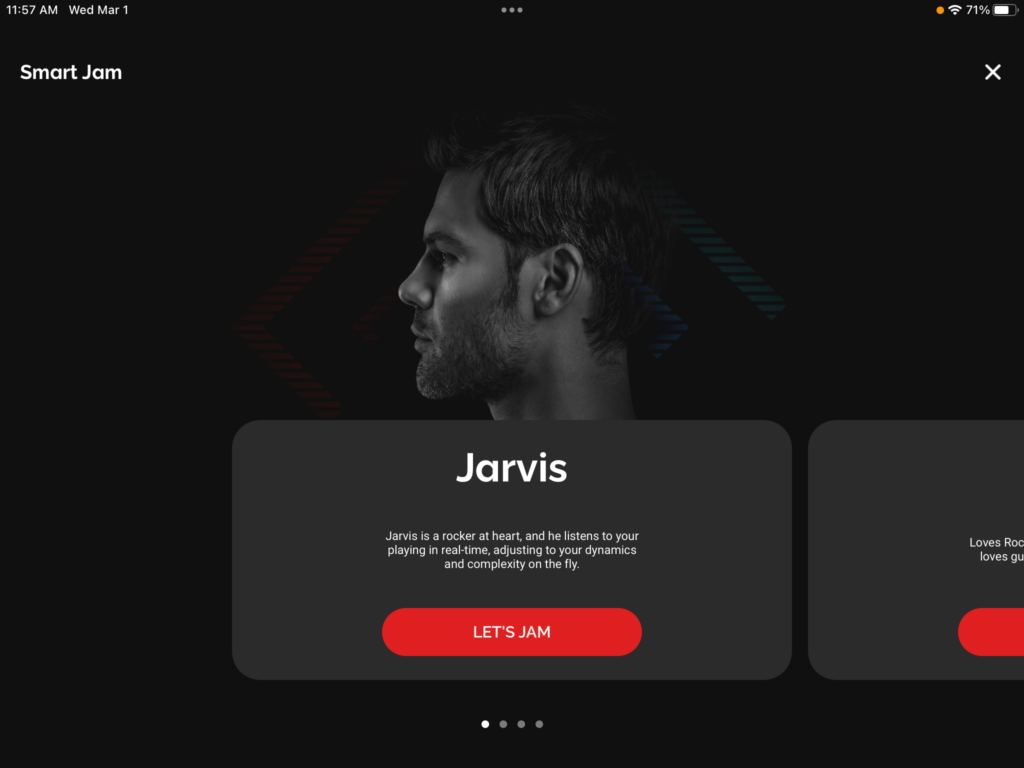
Jarvis, for instance is “a rocker at heart and he listens to your playing in real time and adjusting your dynamics and complexity on the fly.” There are options for funkier or bluesier players and the feature listens to eight bars of music before beginning to play along with other instruments. It’s almost like you’re playing along with the full band, and it’s great for people who don’t have one.
The mobile experience has always been intrinsic to the Spark amps, transforming the products from standard (albeit over-performing) practice amps to a limitless world of tones and functionality that’ll have a stab at replicating any guitar sound. From your guitar heroes, to a completely custom sound that works with what you’re playing.
It could be Slash’s reverb-lased Gibson Les Paul solos, or a beautifully clean John Mayer-like tone. Either way, the Spark amp will have a solution that seeks to replicate the set-up of those icons, from amp models to the effects pedals.
I found it helped me with my timing a lot. When you’re noodling away on your own, it can get a bit all over the place. This kept me disciplined and in rhythm with the drummer.
The full software suite is free to anyone who has purchased the app, instantly unlocking tens of thousands of tones, including those generated by the community. But there are loads of other features like Smart Jam (which adds backing to your jam session), Auto Chords (which transcribes the chords to well-known songs), and the ability to play along with real world tracks from your favourite artists, albeit through the integration of YouTube videos. More on those later.
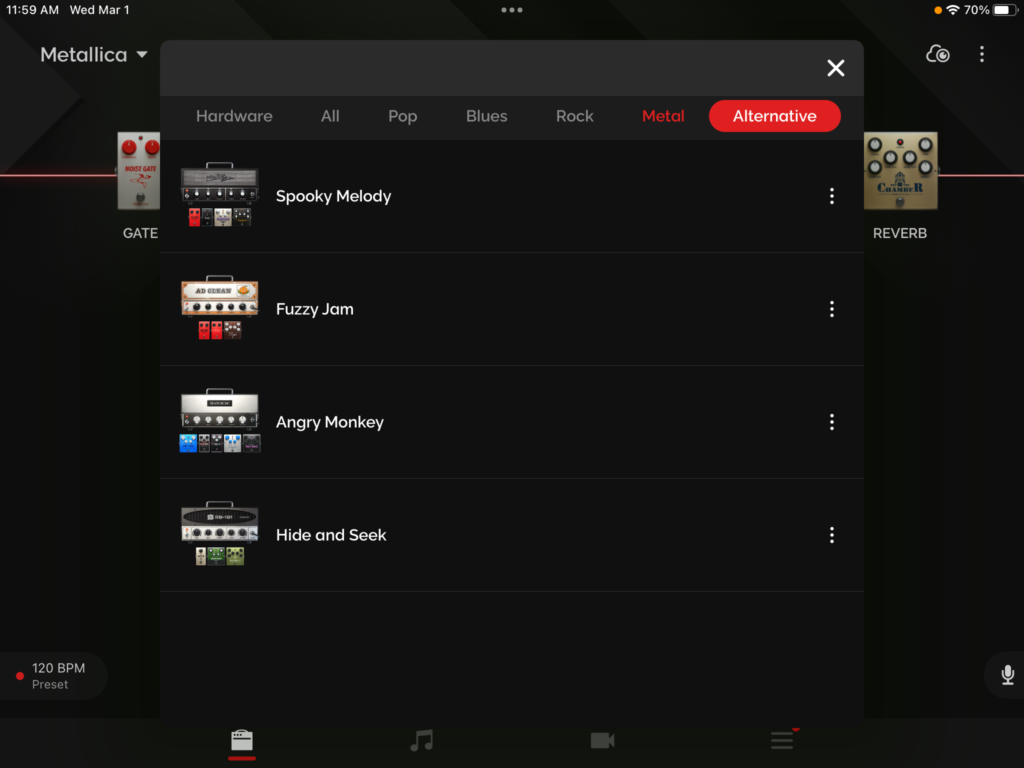
There’s a guitar tuner built-in to the amp with the LED lights for pre-sets performing double duty here too as a visual indicator if your note is sharp or flat. It’s also easy to connect to Spotify or Apple Music to play along with your tunes. The app also has a relatively new self-record feature for capturing video (complete with backing tracks) for easy social media posting.
On the other Spark amplifiers, I preferred using the tablet version of the Spark app, but that’s against the spirit of the Spark Go, which is all about portability. Things are cramped and fiddly on the smartphone, but not annoyingly so.
Unfortunately, and this was the case with the other Sparks, firmware updates for the amp cannot be transferred via the app. You need to do it by connecting to a computer via USB with the bundled-in cable.
As mentioned above, Auto Chords is a feature transposes chords from any song you feed it from a connected Apple Music or Spotify account. These are helpful for beginners, but the interface sometimes feels quite limited. Given the app works as a Bluetooth speaker too, you can play along. Again, awesome for the amateur rocker.
Sound Quality
Bigger sound than expected
Best suited to moderate volume levels
The hallmark of the original Spark 40 amp was its size-defying sound. It’s easy to forget looking at its baby brother that the Spark 40 – a reference to the 40W speaker – was the OG little amp that could. For a practice amp, it has no right sounding as refined as it does at high and low volumes. It was even loud enough for some light gigging or an open mic without losing fidelity. I loved it and have it five stars.
The Spark Mini made some sacrifices with the speaker size (10W), but still overperformed. The Spark Go, meanwhile is much smaller too with a 5W speaker. Again, I tempered my expectations only to have them exceeded again.
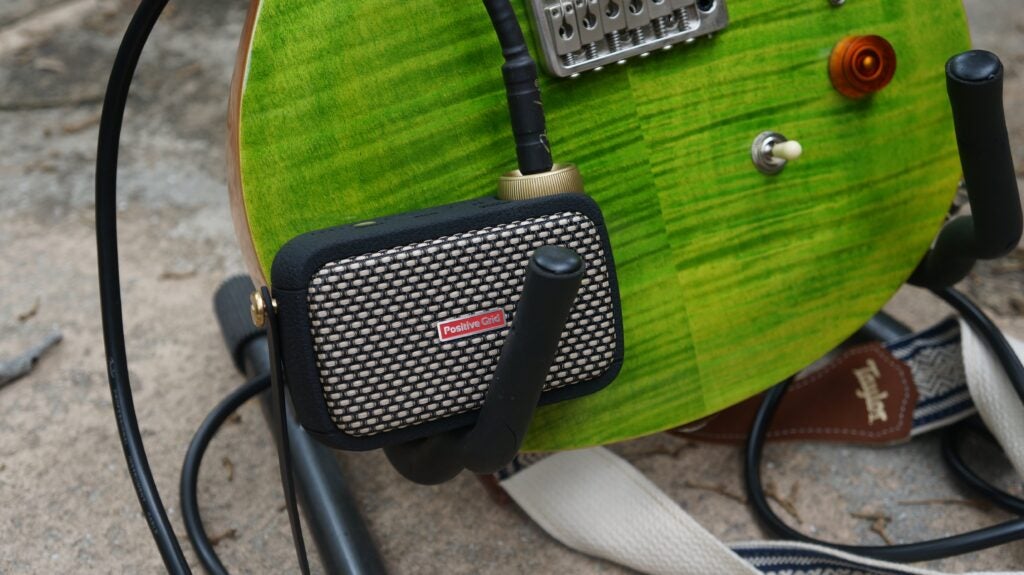
Following instant connectivity with the Spark mobile app via Bluetooth (it seems faster than the other amps), I was blown away. The sound fills the room at top volume without being too abrasive. You’ll be notified with a little “cha-chuck” sound when you reach the top volume as the dial rotates perpetually in both directions.
However, this is an amp best utilised for playing at moderate volume levels. At the low end its tinny and weak, and at the highest end the sound becomes fractured. The happy middle ground is warm and surprisingly refined and nuanced, whether you’re playing a clean tone with delay or going for a heavier overdriven sound with a little reverb. You won’t disturb the neighbours and it’ll be loud enough for you to feel like you’re rocking out.
As much as I relished being able to walk around the house with the amp attached to me, you will get quite a lot of feedback this way.
For what it’s worth, I absolutely loved playing with this thing outside too. Just taking it out into the backyard and laying it on the ground brought out some lovely sounds that blended well with the ambient noise around. It was definitely loud enough to hear clearly as the traffic went by.
The only problem was the led pre-set lights, which are barely visible in daylight, even on a gloomy day with plenty of shade. A minor quibble.
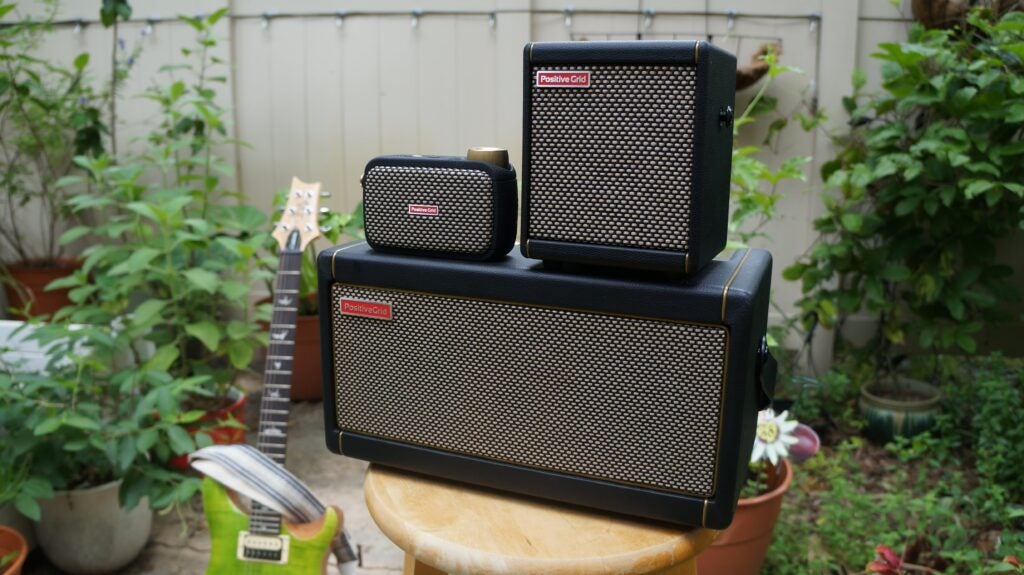
Latest deals
Should you buy it?
For true guitaring freedom in the size of a soda can: The incredible array of tones, decent sound reproduction and long battery life is a dream for the minimalist for whom big sound is a secondary concern. It’s also more practical than the Spark Mini.
If you only play at home, splash out for the Spark 40: If you prioritise the sound quality over the added portability, go with the Spark Mini.
Final Thoughts
Positive Grid has played another blinder with the Spark Go. The Spark Go requires compromises in terms of sound quality, but the amp still outperforms its physical limitations. For users seeking ultimate freedom in terms of portability, wearability of the amp, and on-the-go battery power, it may be the perfect solution. Those app-based features do so much of the leg work, but it’s still remarkable so much can be squeezed into a product the size of one single effects pedal.
The presence of three Spark Amp models now leaves people with a big decision. All three bring something to the table.
The Spark 40 is renowned for truly brilliant sound in a small package. If playing at home and enjoying wonderful sound and you’re in an environment where you can push it loud enough, I’d still go for the Spark 40.
Choosing between the Mini and the GO is trickier. Some reviewers preferred the sound of the Mini to the Spark 40 but I didn’t feel that way. It has the portability aspect, and if you like getting out and about to play guitar without the need to plug into the mains, it’s a great option.
The Spark Go isn’t anywhere near as loud as the Mini and again, the limitations of the smaller speaker become more noticeable in its smaller form factor. However, I think the Spark Go makes the Mini a little redundant. It’s much, much smaller, has the same battery life and access to smart features.
Personally, I’d buy the Spark Go over the Mini for that added portability, and the ability to play with the amp on your person (more or less) wirelessly. You lose sound quality with the smaller speaker, but I think it’s worth it to not notice carrying an amp with you.
In an ideal world, the Spark 40 for the home and the Spark Go for on the go.
How we test
We test every amplifier we review thoroughly over an extended period of time. We use industry standard tests to compare features properly. We’ll always tell you what we find. We never, ever, accept money to review a product.
Find out more about how we test in our ethics policy.
FAQs
Absolutely, you can set the amp to play your preferred tones and plug the amp into your laptop and use your favourite recording software to lay down some tracks.



















